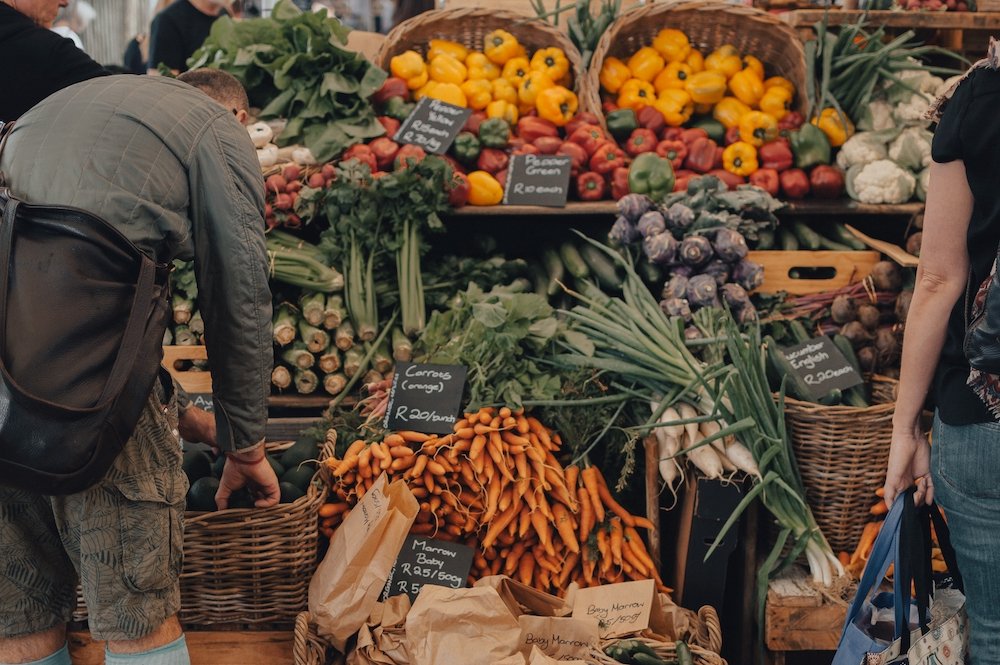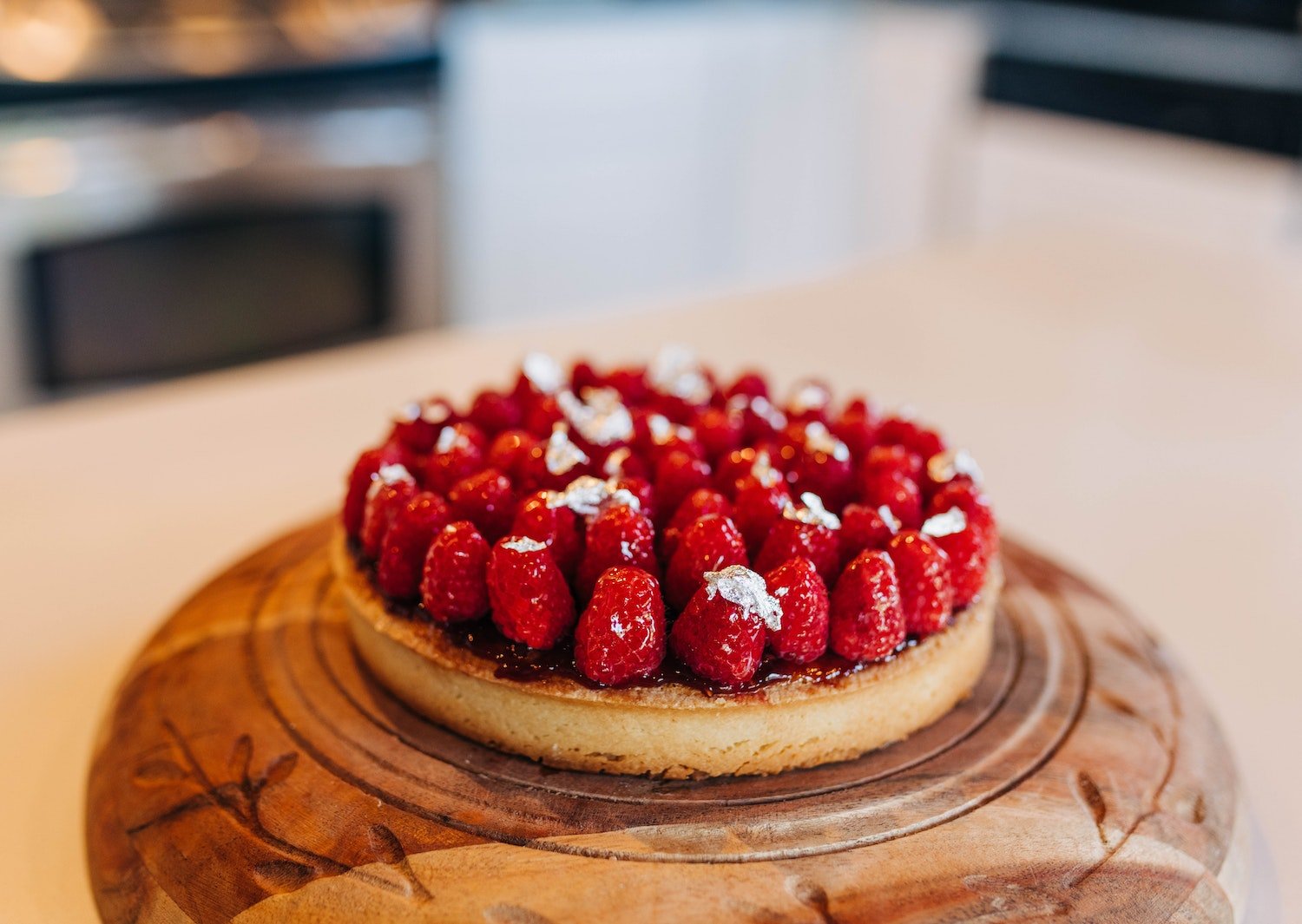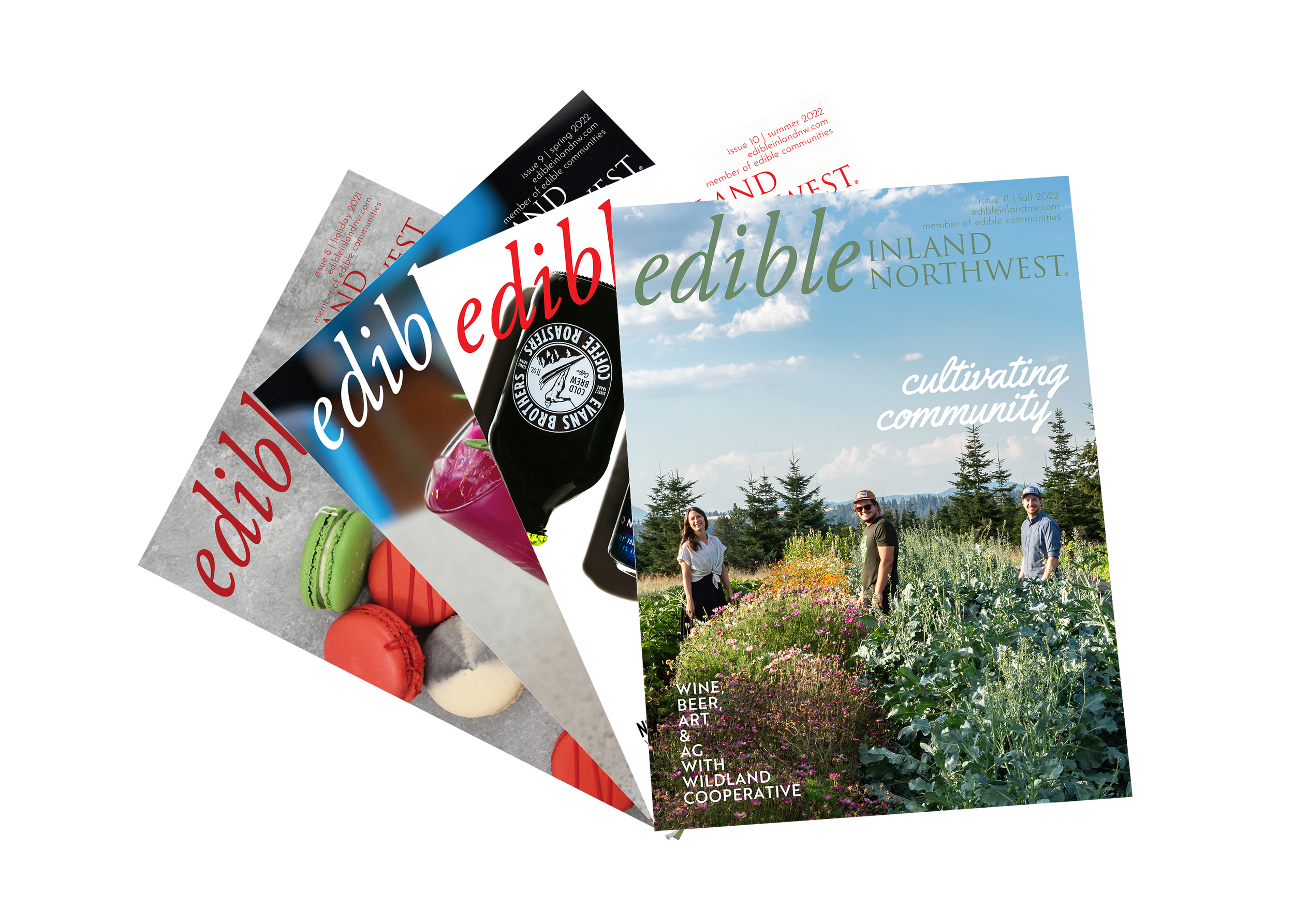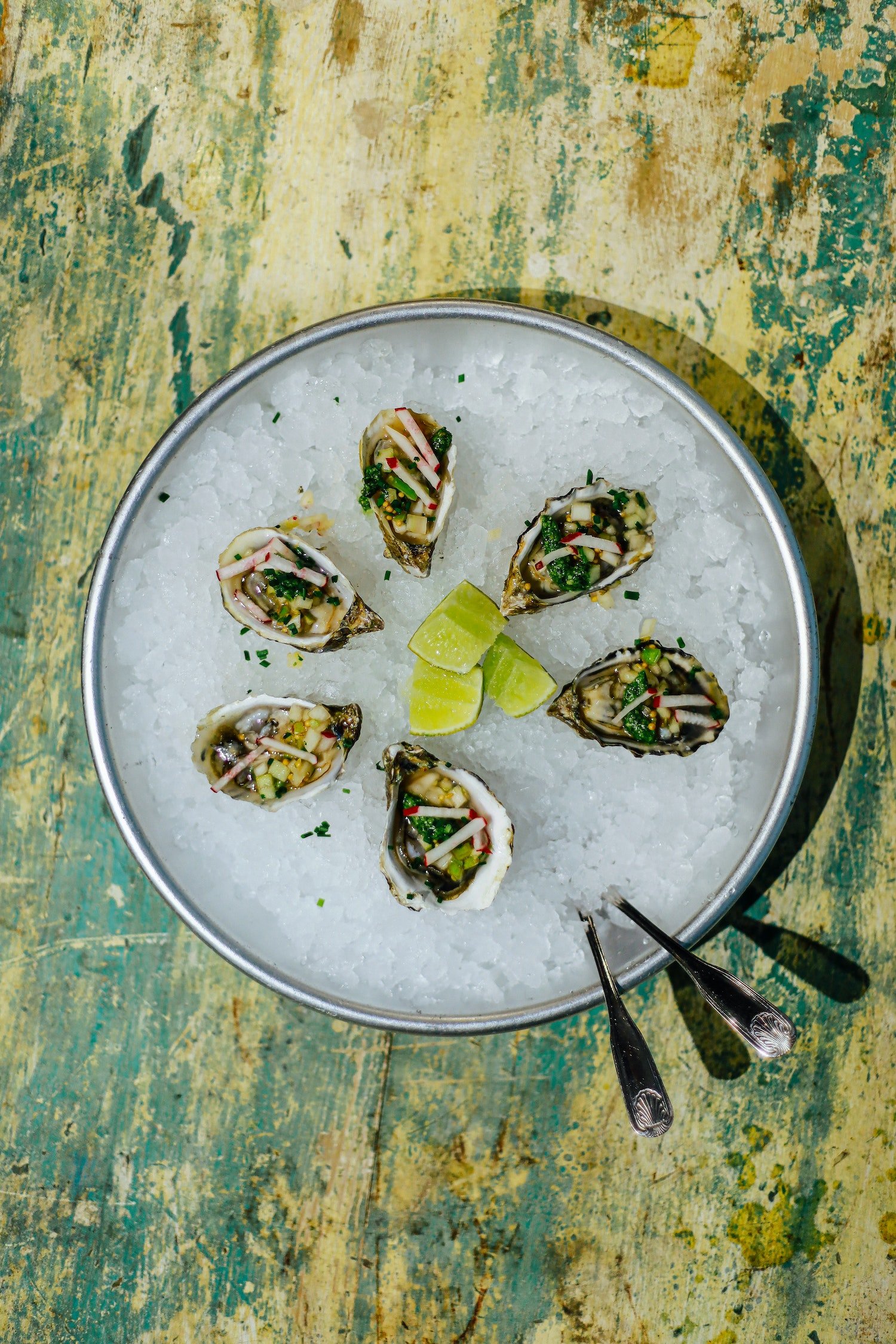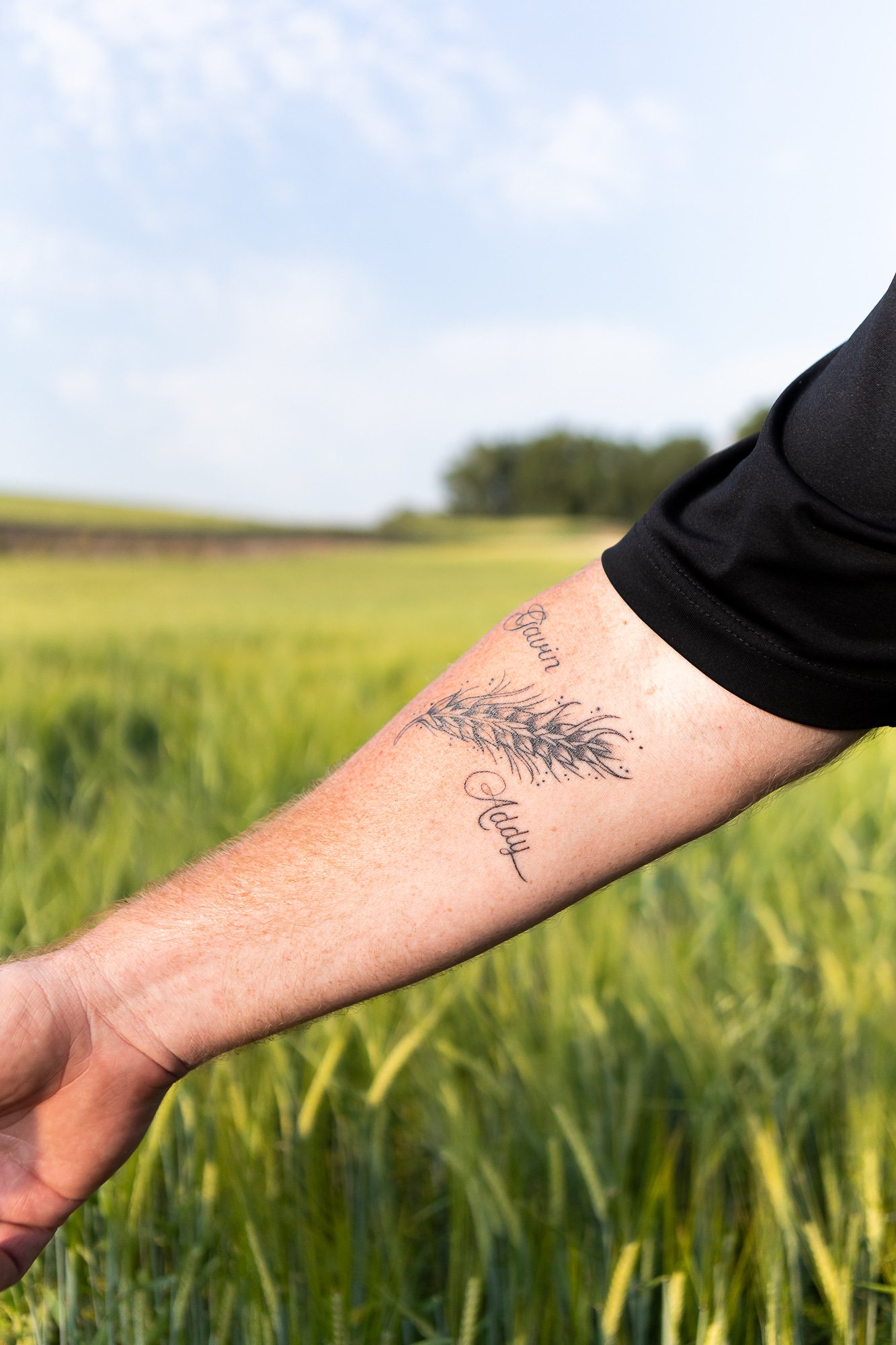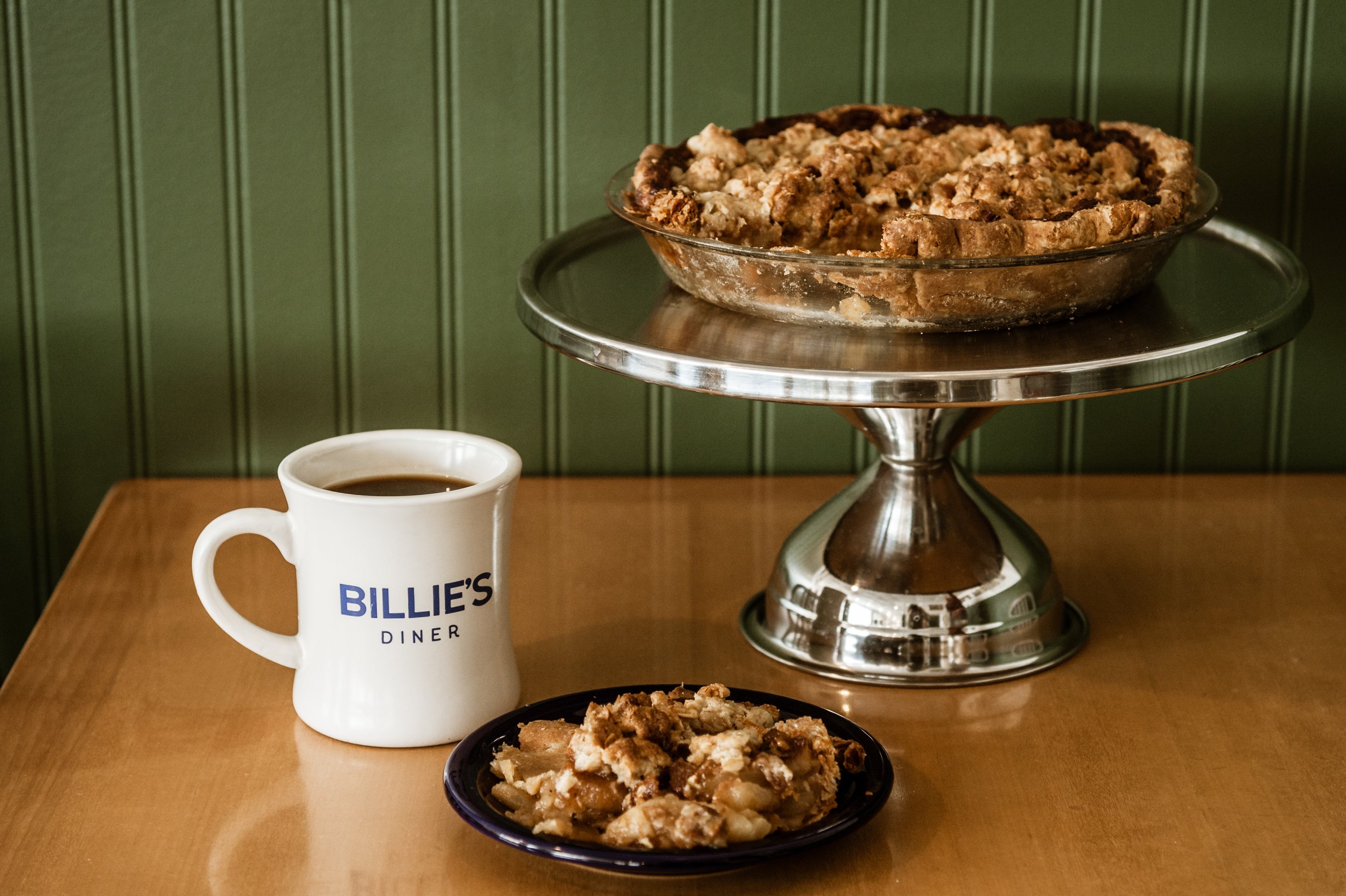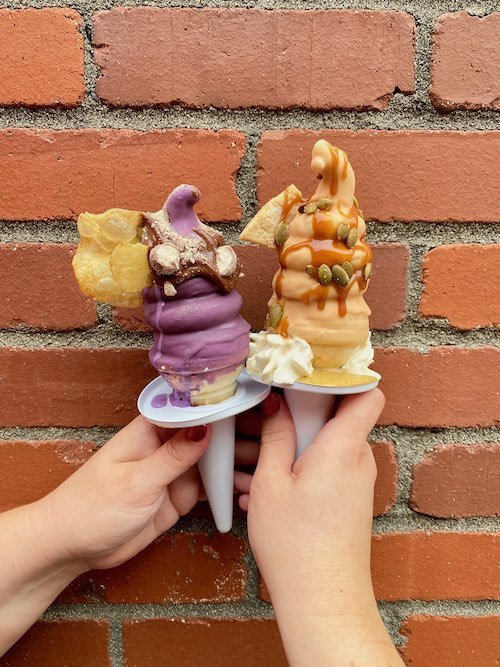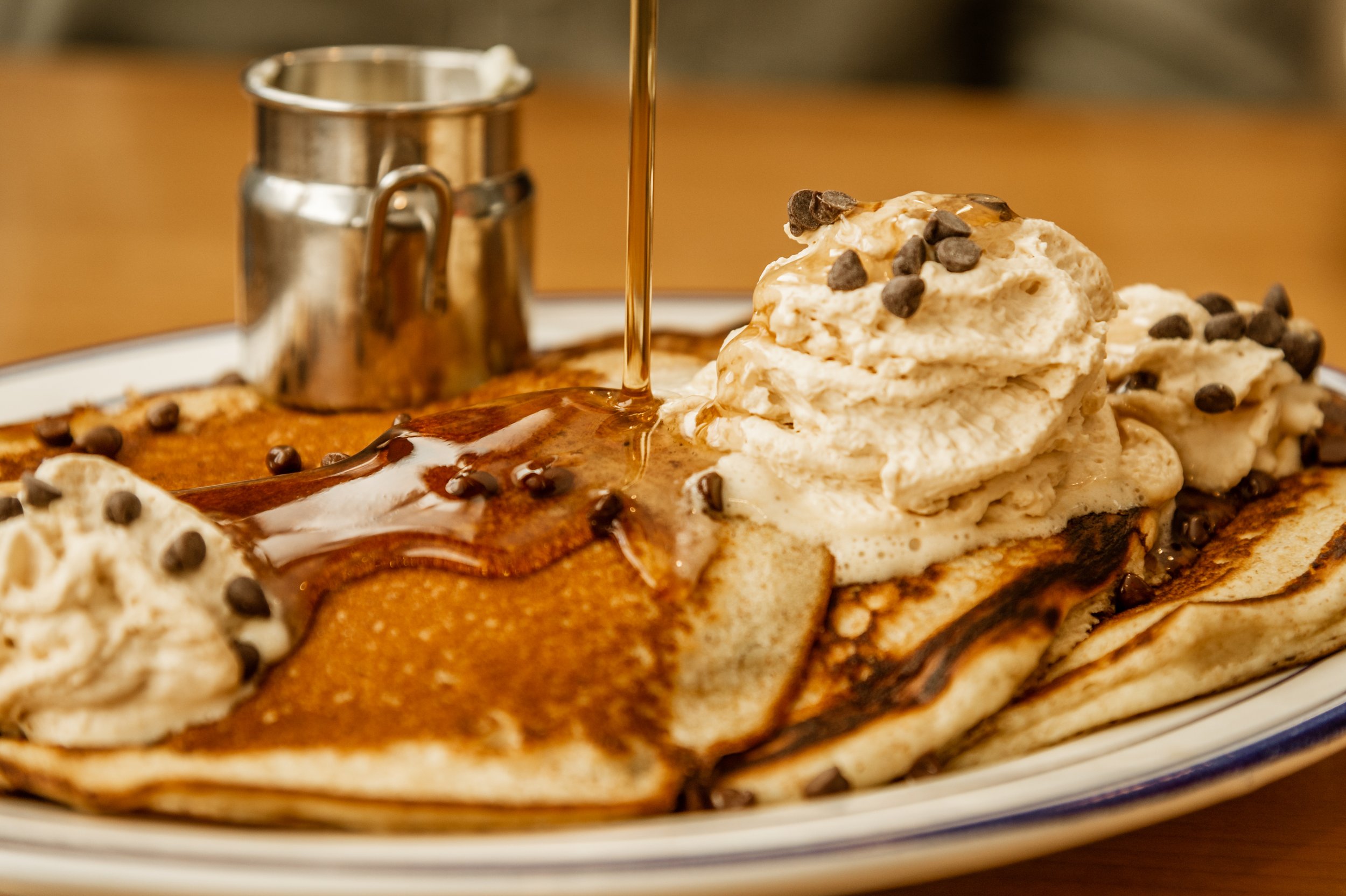Letters, From the Farm
Letters, From the Farm
WORDS AND PHOTOS BY ADRIANA JANOVICH
We gather around the oblong table on the enclosed patio, discussing blackberries.
Rather, pieces of writing about blackberries.
Specifically, poems by Mary Oliver, Seamus Heaney, Sylvia Plath, Robert Hass, Galway Kinnell and Yusef Komunyakaa.
Spokane’s Kate Lebo, author of the 2022 Washington State Book Award-winning “The Book of Difficult Fruit,” guides the discussion. She’s co-leading this five-day food-writing-on-the-farm workshop with her husband, Sam Ligon, a professor in the creative writing MFA program at Eastern Washington University.
Naturally, there’s much writing and laughing and talking about food and farming. The atmosphere is charged with creativity. But it also feels comfortable.
This is my second stay in as many years on Quillisascut Farm, home of Quillisascut Farmstead Cheese and School of the Domestic Arts. The first time, I came to cook and strengthen my culinary skills. The second time, I came to write. Both times, I left feeling transformed and enriched, supported and inspired, ready to embark on new adventures in the kitchen and on the page. Of course, I’m not the only one.
Named for a nearby creek, Quillisascut was founded in 1981 and sits on a 36-acre parcel off of Pleasant Valley Road in rural Rice, a stoplight-less T in the road about an hour from the Canadian border. Farm-school students come from Seattle, Spokane and Moscow, Idaho, to as far away as Chicago and even farther.
Quillisascut has been inspiring chefs and food writers as well as food and farming enthusiasts for 20 years. The farm began offering education and outreach in 2002; owners Rick and Lora Lea Misterly estimate more than 2,000 people have participated in their workshops. Some of these workshops take place over a few hours on a single afternoon while others last four or five immersive days.
Kären Jurgensen has run the kitchen at Quillisascut since the second year of farm school. A fine dining chef-instructor at Seattle Central College’s Seattle Culinary Academy during the academic year, she leads with a humble grace, calming voice, and patient but firm presence. When people come to Quillisascut, she says, “There’s a recognition that I want them to understand, that farm-to-table cooking is whole food-cooking.”
It takes work — often back-breaking, repetitive, stoop work — to get those ingredients to a home or commercial kitchen. “When a beet comes out of the ground, it’s full of dirt,” Jurgensen notes. “Whether they’re getting the dirt off themselves or the farmer is, I want them to understand what it takes to get those high-quality ingredients to their door.”
That’s been the aim since the beginning of Quillisascut’s outreach: to connect chefs and other culinary enthusiasts to the farm so they can see and experience where their ingredients come from.
Rick and Lora Lea came to this particular plot as a young couple with a big but humble dream: to make a living off of the land. They purchased the property right before they wed. Then, they got to work growing food and raising goats.
Lora Lea handcrafted cheese. Rick worked construction to supplement their income, and built the structures on the farm — from the wood-fired oven to the two-story, straw-bale clubhouse where farm school meets. This is the heart of the farm. There’s a table for 20 in the kitchen and the enclosed patio where our meals and twice-a-day food-writing sessions take place.
After more than 40 years on the farm, Rick and Lora Lea raise fewer goats and make less cheese than they used to. Now, they focus on education and growing community.
Days begin at 6:30 a.m. There are chores before breakfast. Everyone pitches in — watering the garden, harvesting produce, washing dishes, cooking meals, feeding the ducks, chickens and turkeys. Working and writing together builds a sense of community and camaraderie.
“As we become more fast food-oriented, we don’t get the connection to culture and place and seasonality,” Lora Lea says. “That was the main reason for wanting to start farm school. We saw chefs as leading the charge in transforming our food systems and bringing local farms into the picture, promoting freshness and what’s available locally and seasonally. We also saw that regional food writers were a piece of the puzzle. It seemed like a natural fit to bring food writers to the farm.”
“It sort of feels like adult summer camp,” says Tiffany Ran, who first came to Quillisascut for a food writing workshop 12 years ago, then again in 2021 for a culinary program. “The food is something you remember every time.”
“When they started this program, people were really removed from the farm,” says Ran, a food writer-turned-founder and operator of Seattle’s Babalio Taiwanese Pop-Up, which specializes in traditional Taiwanese dishes made with seasonal, Pacific Northwest ingredients. “I think that because of the work they’ve been doing all of these years we go to the farm or restaurant or farmers market with a deeper understanding. And I think the impact that those experiences on the farm have on chefs, especially young chefs, is going to have its own ways of changing restaurants and how restaurants operate. It feels really hopeful to me.”
For her, the food-writing workshop “was a good reminder to be true to my own voice, not just in my writing but also in the way food is cooked and served. We sort of have a mission,” she says, “to speak through our food and our cuisine.”
When she came for the culinary program, she was “sort of burnt-out from pop-ups that summer” and needed “just to step away from my routine. I think it awakened something in me.”
“We want to give them a framework for what a sustainable food system might be and an opportunity to try to live that experience, which they get to do hands-on versus in a classroom,” Jurgensen says.
When they get here, “I want them to free themselves from recipes. You can adapt to different ingredients if you understand the methods. That’s essential to be able to cook what’s in season or what a farmer might have on hand.”
And, she says, “I want them to experience what real flavor is.”
It’s easy to understand, as Lora Lea writes in “Chefs on the Farm,” Quillisascut’s 2008 cookbook, published by Skipstone, an imprint of Mountaineers Books, that, “everything is connected here. The soil feeds the plants that feed us. We are merely the walking, talking result of that connection.”
So much food in grocery stores and restaurants has been grown and harvested “for ship-ability. They’re not the true expression of what that particular ingredient might be. I think there’s some palate education to do here. People start to feel better when they’re eating the food (at Quillisascut) because it’s fresh and full of nutrients and flavor — and all of those things connect us to the earth.”
In addition to food-writing, Quillisascut hosts workshops for learning to make tamales, Norwegian potato lefse, and nocino, an Italian liqueur made from unripe walnuts. There are also multiple-day immersive experiences, such as Chefs of Color, Edible Education for teachers, and Farm Culinary 101, an intensive, hands-on retreat into farmstead living and farm-to-table cooking.
Classes are practical. How to bake bread. How to butcher a chicken or a goat or both. How to compost. How to make cheese. How to forage for wild greens and berries. Underlying all are the threads of community, cultivation and conservation. Sustainability is up for discussion, too.
Small farms like Quillisascut make up 90 percent of farms nationwide, but account for just over half of America’s farmland. And 70 percent of American farmers is slated to retire within 20 years. Their average age is 58. And more than a third — including Rick and Lora Lea — is 65 and older.
But, by 2050, the world population is expected to reach 9 billion. To feed everyone, the United Nations Food and Agriculture Organization estimates sustainable food production needs to increase by 70 percent.
Late one morning, Lora Lea teaches us to make mozzarella. Everyone takes turns shaping balls of fresh cheese to top our wood-fired pizzas that night.
The pizza party is a Quillisascut tradition. Everyone decorates dough with ingredients produced on the farm. Rick expertly slides the rounds into and out of the oven. All pizzas are sliced and shared.
That’s the thing about Quillisascut, says Linnet Blumenthal, who’s been coming here for more than two decades and makes a point to try to visit “once or twice” a year. “Everyone pitches in.”
To her, Quillisascut feels like home. “I love the sense of familiarity I feel when I’m there, that I belong there, and that I can be curious and ask, ‘What do you do with this (ingredient)?’ and Lora Lea’s answer is, ‘I don’t know. Here’s what I would do.’ Her approach is down to earth, and she’s happy to share. There’s not a lot of pressure. I think that’s what makes them so successful — that openness and willingness to just hear what someone else has to say.”
Blumenthal’s hospitality students at Seattle Central College seem to feel the same. “They always come back just so excited about what they have learned and who they have met,” she says. “(The experience) becomes a part of their outlook on life. It really does stay with them.”
It stays with me, too, so much so that I’m dreaming of returning before my first visit ends. Here I am a year later, this time surrounded by high-caliber food writers from around the region and country who have written cookbooks and other food-related books and essays. And I’m struggling with the simple prompt.
I’ve written about blackberries before, specifically the invasive Himalayan kind. But I’m suddenly at a loss. I don’t cook with blackberries all that much. I know this doesn’t matter. But this is where my mind goes until the prompt leads me to a memory I had long since forgotten — picking blackberries as a girl in an urban alley on a hot late summer afternoon.
When my fellow food writers volunteer to share excerpts of their pieces, they take me to their childhoods and their memories and other places I have never been. And it feeds my own creativity and excitement. About food writing. About being here. Again, I’m longing to return before I’ve even left.
At the end of our workshop, we’re asked — just as we were last time — to read chef Greg Atkinson’s 2011 “Letter from Quillisascut.” It opens: “You must reserve a place inside yourself to house the substance of what you gained spending a time at the Quillisascut Farm School.”
Yes, I agree, for the second time, I must reserve that space. And, like Atkinson wrote, “Go back again and again to that place, where times like this are stored, and root around until you find some things that might help you create a moment like this for someone else.”














